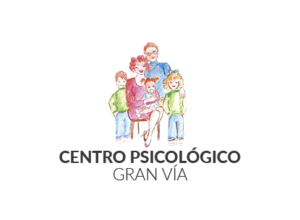Definition
Alcoholism is related to people who have difficulties with alcohol. It can be described as an obsessive behavior where the drinker feels no control and hurts himself and his relationships in the different areas of his life. Nowadays, it is considered a disorder by the DSM-V, but not a disease. This difference is important because during history there´s been a social stigmatic view about alcohol which has affected people suffering this kind of dependence. More men suffer from this condition than women.
Alcoholism refers to a combination of both psychological and physical symptoms. Some of the mechanisms that play an important role on the habit of abusing drinking alcohol are: stress, personal or social situations, age, genetic factors, psychiatric problems and economic class.
Long term drinkers experience an increase in their tolerance and physical dependence of alcohol, which exacerbates the difficulty of controlling the alcohol intake. When an alcoholic stops drinking abruptly, he can suffer withdrawal from alcohol. This can be translated in symptoms such as anxiety, hallucinations, seizures, heart pain and shakes. The aggravated withdrawal syndrome can develop to delirium tremens, which can be fatal. The withdrawal normally lasts between 3 to 6 weeks.
Symptoms
At the beginning, a person who suffers alcoholism will not admit having a problem. Many times, he becomes aware of the disorder when he is already suffering severe damage in the different areas of his live.
Drinking can be considered a problem when a person can´t control how much he drinks, when he feels he needs to drink, he starts to drink alone or in secret and drinking causes relationship, legal, work or economic problems.
Memory can also be affected to drinkers. Because of the need to drink, some people develop behavioral problems such as feeling irritated when they can´t drink like he had expected. It is also very common seeing that people who drink quit hobbies or pleasant activities and substitutes them with alcohol abuse.
 Causes
Causes
Alcoholism is caused by a mix of genetic and environmental factors. People have a higher probability of ending up with an alcohol problem when there is a family history of alcohol abuse. A genetic predisposition for alcoholism makes a person more vulnerable to the environmental influence that can contribute to make this problem appear.
Some of the environmental factors which contribute to the development of a drinking problem are being surrounded by people who usually drink alcohol, having alcohol available and with an easy access, psychological disorders such as depression or low self-esteem and an inefficient management of stress.
Evaluation
Making a diagnosis of alcoholism is usually supported by standardized tests that measure if drinking is a problem or not comparing the subject to a control group.
When a person suffers one (or more) of the following symptoms described below, the diagnosis of the mental disorder caused by alcoholism according to the DSM-V is confirmed (the symptoms have to last at least one year):
- Being irresponsible with obligations (for example, at work, school, family or at home…) because the drinker is drinking alcohol as a frequent habit.
- Drinking alcohol in places and situations in which it is risky either for their own security or other´s.
- Having legal problems because of the habit of drinking alcohol.
- When the person continues drinking despite the serious problems with his friends, family or in other social situations that this habit is causing.
Types of alcoholism
According to Jellinek, it is possible to classify the different types of alcoholism in five differentiated categories, as follows:
– Alpha: The person identified by this type of alcoholism suffers a purely psychological dependence on alcohol, maintaining full control of the intake and the ability to abstain from drinking. However, the drinker often relies on drinking throughout some or even all the stress causing situations and problems of his or her life. Such reliance may sometimes lead to conflict in all areas of individual development.
– Beta: In this case, the individual might present classical health problems such as cirrhosis or gastritis as a result of alcohol use. Nonetheless, no psychological or physical dependency, nor withdrawal syndrome, can be attributed to this type of alcoholic. It is often found among cultures where heavy drinking and an inadequate diet are often found in combination.
– Gamma: The subject to which this type of alcoholism refers to has acquired tolerance, a physiological dependency leading to withdrawal symptoms, and an increasing sense of control loss. One of the most central characteristics of this species is the progression from psychological to physical dependence, which certainly leads to severe physical health and social related damage to the person suffering from it. The description of this type of alcoholism is often considered the description of alcoholism as a broad term.
– Delta: Very similar to the previous species, the Delta alcoholic also suffers from both psychological and physical dependence. However, in this case there is no feeling of loss of control for the person, being able to control on occasion how much he or she would drink. Unfortunately, the subject would suffer withdrawal syndrome if he spends as much as one day without consuming alcohol, what makes him or her unable to abstain from using.
– Epsilon: This type of alcoholism is also known as period drinking or dipsomania, where the most relevant characteristic is binge drinking. Although it can be sometimes confused with a relapse of the gamma type of alcoholism, it is considered a category of its own.
Of the previously described species of alcoholism, Jellinek did not categorize all of them as diseases, because he considered both the alpha and epsilon varieties to actually be mere symptoms of other mental disorders. Nonetheless, the gamma and delta varieties of alcoholism were clearly thought to be diseases, given the involvement of both physiological changes and the aggravation of the symptoms found in them.
 Treatment
Treatment
The first step in the alcoholism treatment is that the alcoholic recognizes he has a problem and has to quit alcohol intake. What professionals do with these people is help them to stop drinking and then show them how to support difficult situations where they will have to resist the temptation of drinking. There are many people who try stop drinking (or reduce the amount of alcohol intake) on their own, but only 30% succeed.
Detoxification is a very used procedure for alcoholism treatment. It consists in helping the person stop drinking abruptly by using medication, and that way, avoiding withdrawal symptoms. Some patients in a program of detoxification have to be hospitalized in order to follow the treatment. Others, can do it as outpatients. This method will only be effective if the person takes it seriously and does not drink at all. If the patient has a relapse, it is important that he tries once and again until he succeeds.
People in a detoxification program will also need some type of psychotherapy or psychological help. With therapy, the alcoholic will be able to manage better the situations in which he desires to drink and will also learn prevention skills. Group therapies work very well in alcoholic treatments. Family support during the therapy will be absolutely crucial.
It is positive that investigation says that people who quit drinking and maintain abstinent during one year, will be able to recover from some of the brain damage caused.
Bibliography:
http://en.wikipedia.org/wiki/Alcoholism
http://www.dlcas.com/MAAP/JELLINEK_PHASES.pdf


